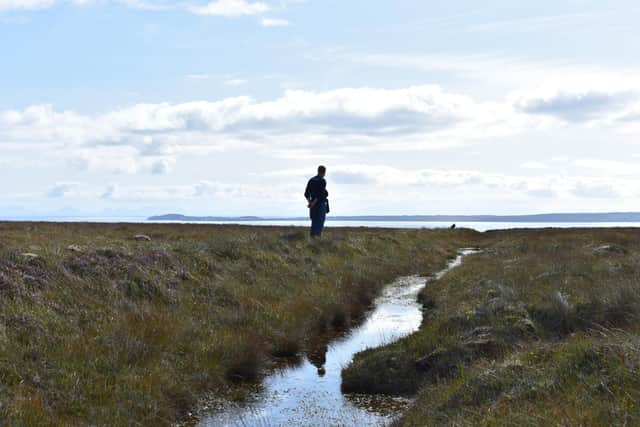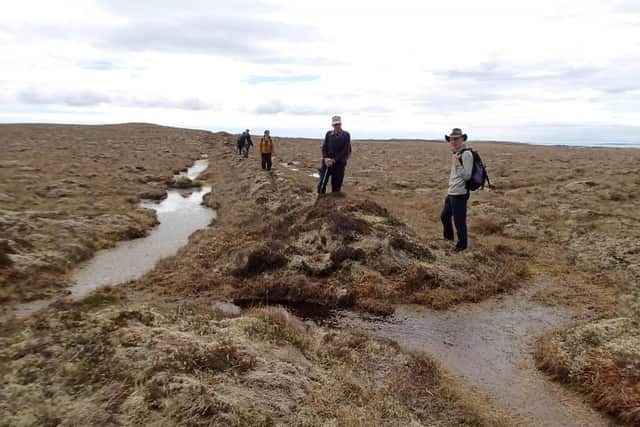The eclipse of the sun on a Scottish island reveals the secret of the Midnight Wall
There are stories told about the Midnight Wall, which divides a stretch of land at Gress on the Isle of Lewis and has long been steeped in myth and tradition.
Accounts handed down over generations suggest the building of the wall was either ordered by a landowner, who put her tenants to back-breaking work in order to split her property in two for her sons. Others believe it was built as a boundary to separate two feuding clans.
Advertisement
Hide AdAdvertisement
Hide AdWhat both stories have in common is that as men undertook the filthy, physically wretched task, they were plunged into darkness at the height of the day. It was believed a message was being sent from above as a judgement on those associated with it. As a result, tools were downed in fear, work stopped and the “Midnight Wall” was named.


Recently, those living among the landscape have sought to peel back the truth from fiction surrounding the Midnight Wall and may have come up with an explanation as to why darkness fell.
Donald MacDonald, of Back Historical Society, or Comann Eachdraidh Sgìre a’ Bhac (CEBAC), who took part in the research, found that two solar eclipses, which would have been visible from Lewis, occured in 1748 and 1699.
It is thought the second date is more likely for the naming of the Midnight Wall given that, at that time, Gress was dominated by McIver and Morrison clansmen.
Mr MacDonald said: “The story of the Midnight Wall is probably not that well known now but we came across an old document that was compiled in the 1980s by some of the older people in the community. They recognised that the oral tradition was dying out and wanted to get the story written down.


"The story is just hearsay, there is no documentary evidence to back it up, but what we do know is the wall is definitely there.”
The wall sits between two hills, Beinn Iomhair and Beinn Chailein, which translate to Ivor’s Hill and Colin’s Hill. According to one of the traditions, the names are said to be those of the landowner’s sons.
However, Ivor is also associated with Clan McIver while Colin is a popular family name among the Morrisons.
Advertisement
Hide AdAdvertisement
Hide AdMr Macdonald said it was presumed a large workforce of tenants was dispatched to construct the wall, which was built from the turf dug up from the ground with ditches formed either side of the construction.
"It would have been incredibly difficult work to do. The ground was very wet, very soggy and even to dig a yard would have been extremely tough, let alone almost a mile,” he added.
The historical society worked with archaeologist Ian McHardy to trace the line of the Midnight Wall, also known as Gàrradh Meadhan Oidhche.
Mr McHardy said such walls were common through the area to keep animals away from villages during growing season but added the Midnight Wall differed given it had a ditch either side and appeared to have served as a boundary wall.
He added: “The project gathered information about the Back area which greatly enhances national records held in Edinburgh. It means these recors are being written by local people, with local knowledge and local interests.”
Comments
Want to join the conversation? Please or to comment on this article.